Blending Rococo and Kitsch, Beth Katleman Explores the Myths of Domesticity

Blending Rococo and Kitsch, Beth Katleman Explores the Myths of Domesticity
By Emily Rappaport
Mar 30, 2015, artsy.net
Several of the 20th century’s seminal movements involved bringing elements of popular mass culture into the realm of high art. Pop artists appropriated magazine advertisements in the ’60s; kitsch artists made balloon dogs in the ’90s. Andy Warhol printed self-consciously garish patterns on rolls of wallpaper. Decades earlier, Picasso used a swath of tawdry floral wallpaper for the background of a collage that otherwise combined elements of elite culture.
Beth Katleman, an American sculptor who will be premiering new work at Todd Merrill Studio’s booth at the Collective Design Fair in New York this May, has a practice that is rooted in the witty fusion of traditional tropes and materials of high and low culture. Katleman casts toys, dolls, and other knick-knacks found on eBay and at flea markets in porcelain before arranging them into pastoral scenes. The aesthetic is an unlikely blend of rococo—the 18th-century French style depicting the idyllic amusements of the aristocracy—and good old-fashioned kitsch.
Katleman, like Warhol and Picasso, works with wallpaper; her Folly installation (2010), for example, consisted of florid porcelain sculptures mounted onto a pastel blue wall, creating a kind of three-dimensionally patterned paper. Unlike her male predecessors, however, Katleman also uses this medium to explore—and, ultimately, undermine—the myths of domesticity. “There’s been a tradition of artists inspired by wallpaper,” she has said. “It’s so polite….You think, English country houses. You feel comfortable. You are used to feeling like it’s in the background, and that it’s safe. So, as an artist, you can use that to mess with people’s heads. Wallpaper puts people’s defenses down, and you can exploit that a little bit.”
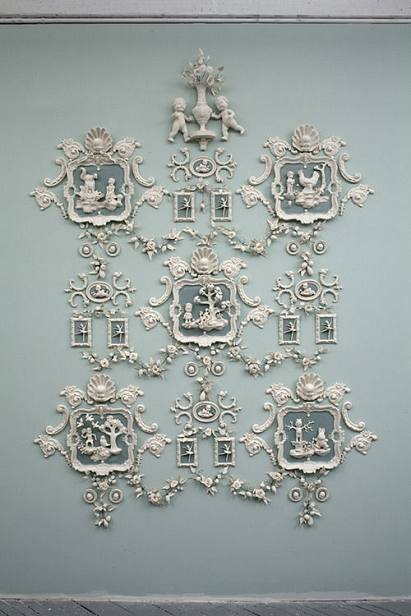
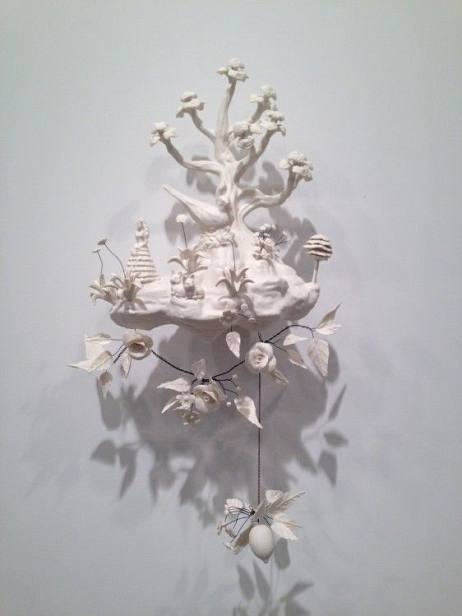
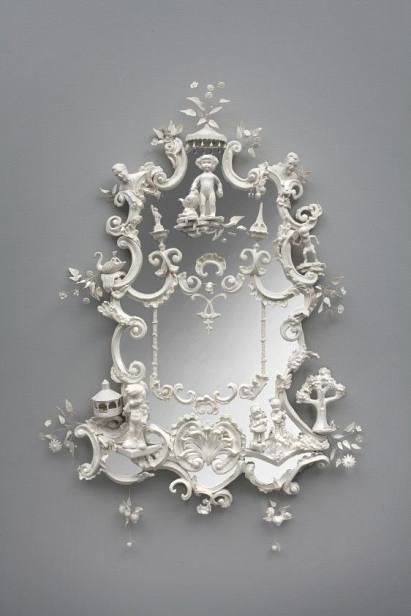
To be sure, the ostensible delicacy of Katleman’s work conceals a dark edge. In Leda (2013), two young girls play and dance vulnerably in a park filled with butterflies; a riled-up swan stands nearby, in an ominous nod to “Leda and the Swan,” the oft-referenced Greek myth that contains an aggressive sexual encounter between Zeus and the mortal Leda. In Lavinia (2013), cherubic toddlers in a garden brandish daggers.
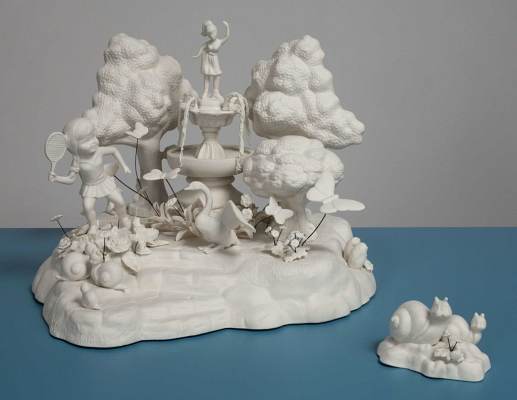
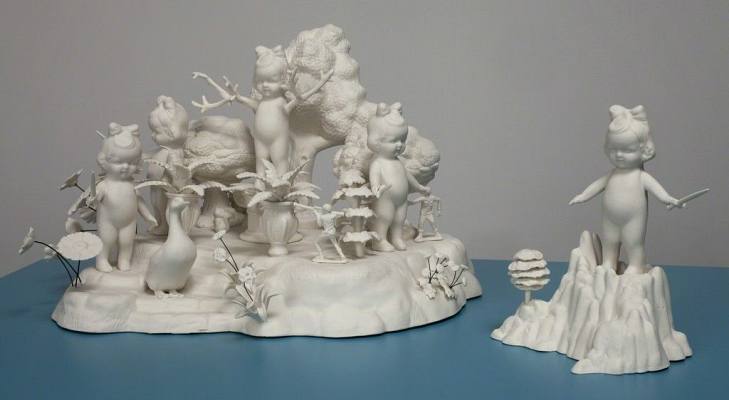
A maiden in a ballgown stands placidly in the forest in Girls at War Wall Sculpture (2013), her back turned to the soldiers who aim machine guns at her from a gazebo. The Enchanted Hunters, one of two new porcelain mirrors that will debut at Collective, is based off Vladimir Nabokov’s Lolita, an essential story of the corruption of halcyon American suburbia. In all of this work, Katleman makes the critical feminist point that preciousness often conceals violence.